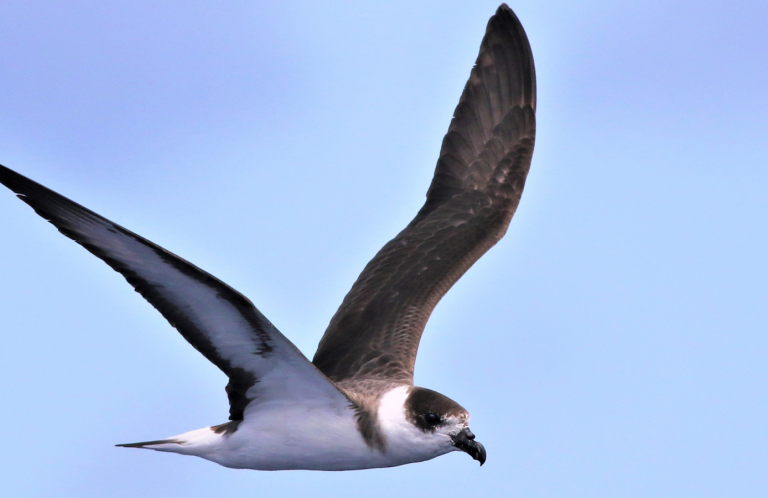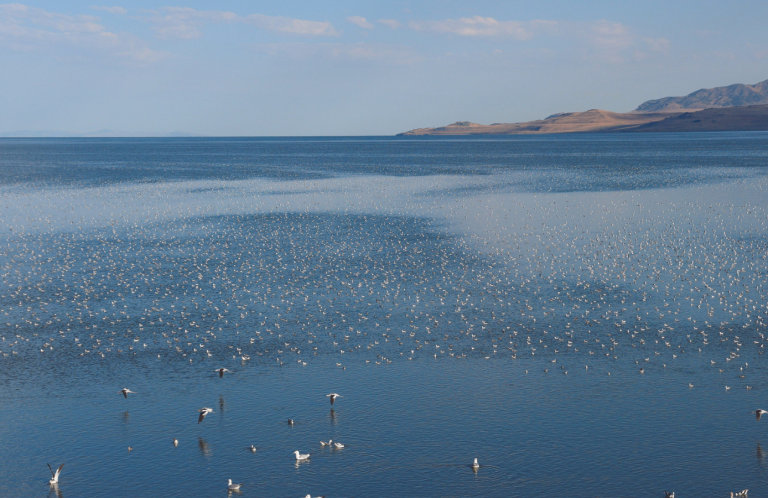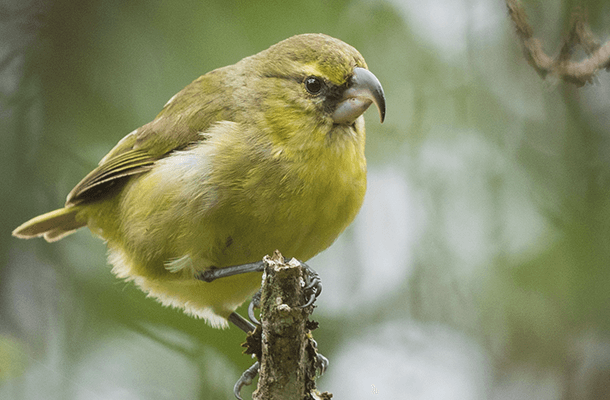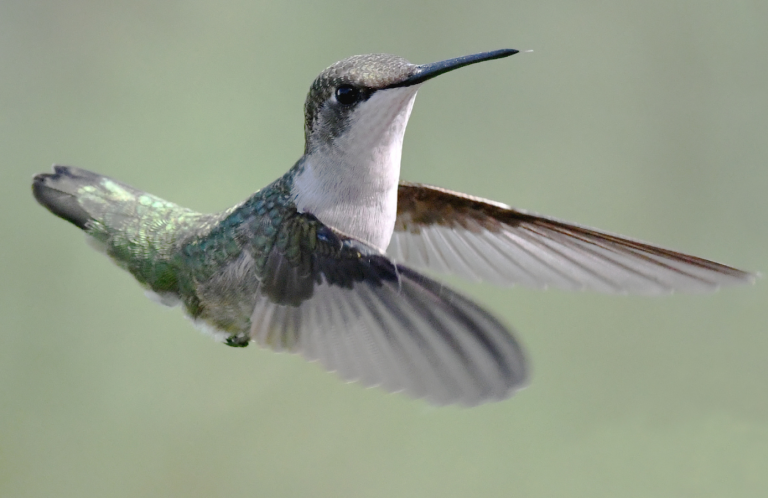Sustainable Forests Grow from Vision to Reality
In the early 1990s, a small group of conservationists worked with the forest products industry to develop a certification standard that would help companies manage their forests sustainably. The result was the Sustainable Forestry Initiative.
Today, more than 250 million acres of forested land are certified to the SFI standard. The initiative has more than 100 participating companies and has profoundly changed the way millions of acres are managed in North America. The next step? Using that vast expanse of working forests to increase conservation for birds and other wildlife.

Golden-winged Warbler is a species that benefits from sustainable management of forests. Photo: Greg Lavaty
I recently caught up with Larry Selzer—immediate past chair of the SFI board of directors, president and chief executive officer of The Conservation Fund, and ABC board member—to talk about SFI's history and how those conservation efforts are taking shape.
Clare Nielsen: How did the Sustainable Forestry Initiative come about?
Larry Selzer: For decades, the forest products industry managed its own forests out of the public eye. Some practices did not fit with best environmental management practices, including large-scale clear-cutting, harvesting of ecologically important old-growth, and harvesting in riparian corridors.
The degree to which these forest management practices were having a negative impact—on wildlife habitat, wetlands, and river corridors—finally burst into public view in the 1980s, when things like aerial and satellite photography for the first time presented images and data to the American people. They were upset by what they saw and wanted the industry to improve its practices.
One way to bring about change was to get the regulatory agencies involved, and today, we have regulations around endangered species, streamside management zones, and more. However, many believed there was even greater power in having the industry operate transparently within a new forest certification standard that would be uniform across all 50 states.
CN: So what happened?
LS: By the early 1990s, the industry was under intense pressure from the activist community. The Conservation Fund was the only organization willing to engage with the forest products industry to help bring about change. We were there in 1992 to discuss development of a certification standard that would provide assurances that forests were being managed in a sustainable way.

Swallow-tailed Kite is another species that will benefit from a new ABC collaboration with the Sustainable Forestry Initiative and its participating companies. Photo: Steve Byland/Shutterstock
Since then, SFI has become a fully independent organization. The vast majority of [North American forest products] companies are certified to SFI. Some examples of leadership from the industry include Hancock Timber Resource Group, Georgia-Pacific, Plum Creek, Resource Management Service, and Weyerhaeuser.
Together, the working forests that are certified to the SFI standard now cover more than 250 million acres. From the forest floor to the finished product, the SFI standard provides assurance that these forests are being managed responsibly, with a third-party audit process ensuring that the certification has been earned.
CN: What is your vision for SFI?
LS: In the beginning, the goal was to get as many acres certified as possible. SFI has been successful beyond anyone's expectations. Now that we have surpassed 250 million acres, how can we use that certified land base to make significant contributions to conservation? This is a big, bold vision for the future of SFI and opens up incredible opportunities for partnerships.
CN: How does ABC fit into this picture?
LS: I've been involved with SFI since its inception, and SFI is the strongest certification available today. But SFI is not a conservation implementation organization; it needs partners on the ground, like ABC, to get conservation done.
I was excited about putting these two world-class organizations together and seeing the partnership blossom. ABC and SFI are in the early stages of something of profound importance. As we work with SFI landowners to help them think differently about how to manage lands for conservation, for birds, we can do amazing things.
CN: Why ABC?
LS: As the leading practitioner for bird conservation, ABC is in a unique position to help SFI and landowners understand how to do more for birds while not diminishing the economic value of the forested assets they own.
A prime example right now is the Golden-winged Warbler. ABC is working on a pilot project to increase habitat for this species, which is under review for potential listing under the Endangered Species Act, by working with SFI-certified landowners to change the way they are managing their land. As we gather information from this pilot, we will then be able to apply what we've learned to other bird species.
CN: Can you give us an idea how that will work?
LS: Imagine you have a large acreage and you want to ensure that the Cerulean Warbler, a bird that requires mature forests, benefits from that land. You could set aside a fixed set of acres, say 100,000, and decide not to harvest those trees—but this would be a rather simplistic approach that would diminish the economic value of the land to the landowner.
Alternatively, you could dedicate a certain percentage of acreage to be managed as old-growth all the time, allowing the landowner to ensure there is always land for Cerulean Warblers. In other words, there would always be 100,000 acres of old-growth available for ceruleans, but where those acres are might shift across an ownership over time.

Cerulean Warbler, Greg Lavaty
This requires in-depth science. ABC is in a position to aggregate the best science and translate it for a landowner to help get a different management regime on the ground.
CN: You're on the board of ABC and you're also the immediate past chairman of the board of SFI. What's the common thread?
LS: Birds! They were one of my first windows into the natural world. My first piece of technology was a pair of old Tasco 10 x 50 binoculars, and seeing birds through those lenses had a profound impact on me. I came to understand that birds are an indicator of how well we are treating the landscape around us. As someone who has dedicated my professional life to conservation, I know this is an indicator that works.
CN: Was there a particular bird that sparked your interest?
LS: Although I didn't see one until I was in college, my favorite bird has to be the Northern Fulmar. Nothing spectacular, just solid. I think of the Northern Fulmar like an offensive tackle on a football team or the kind of guy you might meet at a neighborhood bar. Friendly, without guile, just getting the job done.

Northern Fulmar, TTphoto/Shutterstock
I used to enjoy watching them fly along the waves when I was out at sea; unlike the more graceful shearwaters, they would sometimes catch a wingtip and crash into the face of the wave. But they always popped up, shook it off, and plowed ahead.
My kind of birds.
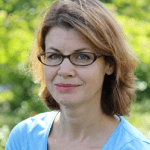 Clare Nielsen is ABC's Vice President of Communications. She joined ABC in 2013, bringing more than 25 years of communications expertise gained at Conservation International as well as the U.S.-Asia Environmental Partnership, C-SPAN, MCI Communications, and other nonprofit and for-profit groups. She graduated from Virginia Tech with a BA in English and a minor in business. Clare is a native plant gardener and student of natural history who comes from a long line of bird lovers, including a physicist-grandfather who sketched chickadees and a grandmother who adored Evening Grosbeaks.
Clare Nielsen is ABC's Vice President of Communications. She joined ABC in 2013, bringing more than 25 years of communications expertise gained at Conservation International as well as the U.S.-Asia Environmental Partnership, C-SPAN, MCI Communications, and other nonprofit and for-profit groups. She graduated from Virginia Tech with a BA in English and a minor in business. Clare is a native plant gardener and student of natural history who comes from a long line of bird lovers, including a physicist-grandfather who sketched chickadees and a grandmother who adored Evening Grosbeaks.





































